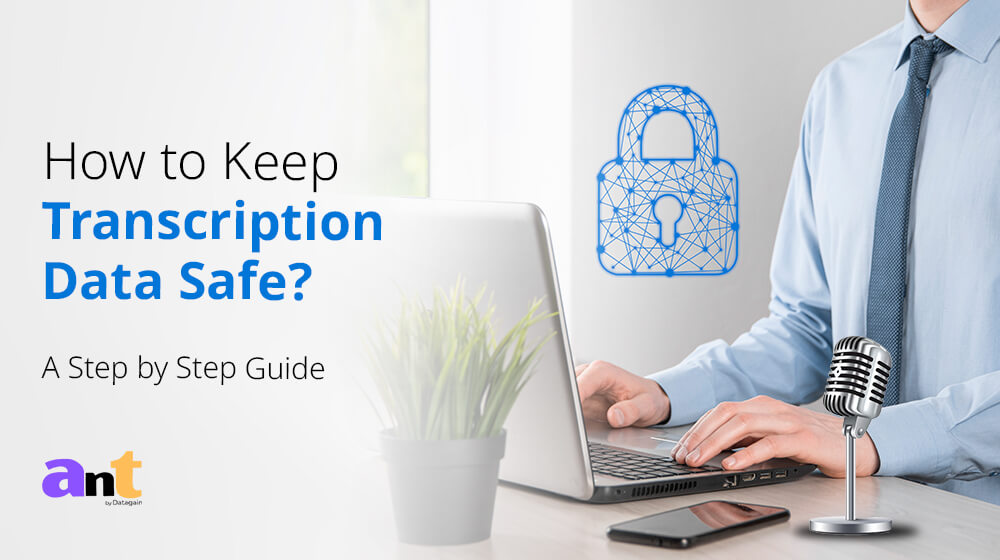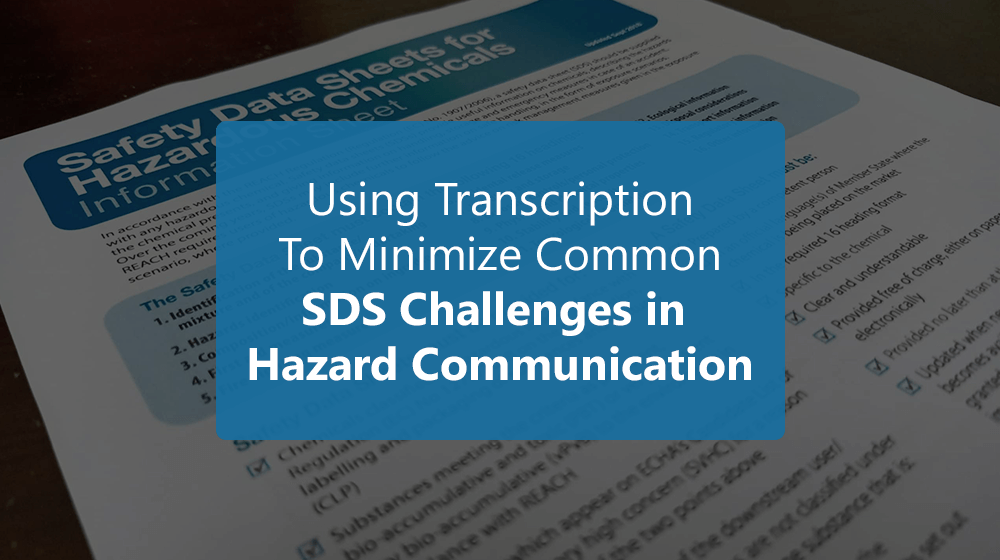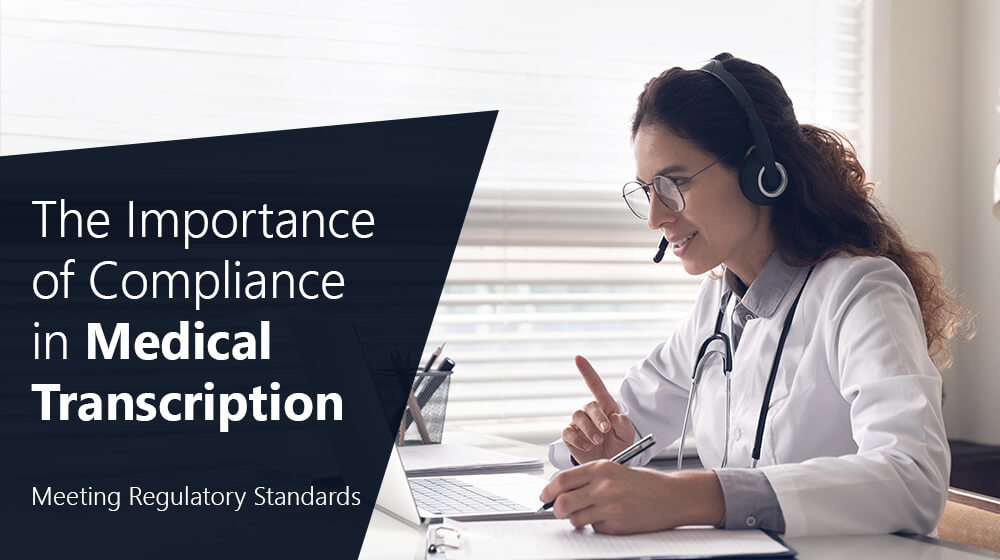Are you working on a project that involves sensitive information? Or perhaps you’re handling personal data as part of your job? You’re right to be concerned about keeping it safe!
A staggering 45 million individuals were impacted by healthcare data breaches in the US in 2021 alone.
Even more alarming, the global average cost of a data breach reached $4.45 million in 2023. These breaches can happen to anyone, at any time, and the consequences can be devastating.
But don’t worry, we’re here to help!
In this blog, we’ll share expert advice on how to protect your valuable transcription data security and give you peace of mind.
The Importance of Data Security in Transcription
Transcription services are essential in healthcare, legal, academic, and business sectors. They convert spoken language into written text, often handling sensitive and confidential information. Protecting this data is crucial because:
1. Confidentiality: Transcription often involves sensitive information, such as patient medical records, legal proceedings, business meetings, and academic research. Maintaining the confidentiality of this information is crucial to protect the privacy of individuals and organizations.
2. Compliance: Many industries must comply with strict data protection regulations like the Health Insurance Portability and Accountability Act (HIPAA) in healthcare, the General Data Protection Regulation (GDPR) in the European Union, and the California Consumer Privacy Act (CCPA) in the United States. Ensuring transcription data security is essential to comply with these regulations and avoid legal penalties
3. Trust: Clients entrust transcription service providers with their sensitive information. Demonstrating a commitment to transcription data security helps build and maintain trust, fostering long-term client relationships.
Risks Associated with Data Breaches
Data breaches in transcription can have severe consequences, including financial losses, reputational damage, and legal ramifications. Some common risks associated with data breaches in transcription include:
1. Unauthorized Access: Unauthorized individuals gaining access to transcription files can lead to the exposure of sensitive information. This can occur due to weak passwords, unencrypted data transmission, or inadequate access controls.
2. Data Leakage: Data leakage can occur when transcription files are improperly shared or stored. This can happen through insecure file-sharing methods, unprotected storage devices, or mishandling of physical documents.
3. Malware and Phishing Attacks: Cybercriminals often use malware and phishing attacks to gain access to transcription files. These attacks can compromise the transcription data security and result in significant losses.
4. Insider Threats: Employees or contractors with access to transcription files can pose a risk if they intentionally or unintentionally mishandle sensitive information. Insider threats can be challenging to detect and mitigate.
Best Practices for Protecting Sensitive Information
To safeguard sensitive information in transcription, service providers and clients must adopt best practices for transcription data security. The following strategies can help ensure the protection of transcription data:
1. Implement Strong Access Controls
Access controls are essential to prevent unauthorized individuals from accessing transcription files. This includes using strong passwords, multi-factor authentication (MFA), and role-based access controls (RBAC). Only authorized personnel should have access to sensitive data, and their access should be regularly reviewed and updated.
2. Encrypt Data Transmission and Storage
Encryption is a critical security measure for protecting transcription data. Data should be encrypted both during transmission and storage. This ensures that even if unauthorized individuals intercept the data, they cannot read or use it without the encryption key.
3. Use Secure File-Sharing Methods
Secure file-sharing methods are vital for transmitting transcription files between clients and service providers. Avoid using unsecured methods, such as email or public cloud storage services. Instead, use encrypted file-sharing platforms or secure file transfer protocols (SFTP) to ensure transcription data security.
4. Regularly Update Security Protocols
Cybersecurity threats are constantly evolving, making it essential to regularly update security protocols. This includes installing security patches, updating software, and conducting regular security audits. Staying up-to-date with the latest security measures helps protect against new and emerging threats.
5. Conduct Employee Training and Awareness Programs
Employees and contractors play a crucial role in maintaining transcription data security. Regular training and awareness programs can help them understand the importance of data security and recognize potential threats. Topics should include recognizing phishing attempts, securely handling sensitive information, and following company security policies.
6. Implement Data Anonymization and Redaction
Data anonymization and redaction protect sensitive information in transcription files. Anonymization removes personally identifiable information (PII), while redaction hides sensitive details that aren’t relevant. These methods reduce the risk of data exposure.
7. Establish Incident Response Plans
A robust incident response plan is essential for addressing data breaches quickly and effectively. It should outline steps to take in the event of a breach, including notifying affected parties, containing the breach, and mitigating its impact. Regularly testing and updating the plan ensures preparedness for potential security incidents.
8. Partner with Reputable Transcription Service Providers
Choose a reputable transcription service provider committed to transcription data security. Look for providers with industry certifications like ISO 27001, which demonstrate adherence to rigorous data security standards. Review their security policies and practices to ensure they meet your data protection requirements.
9. Monitor and Audit Access to Transcription Data
Continuously monitor and audit access to transcription data to detect and prevent unauthorized access. Use logging and monitoring tools to track who accesses the data, when, and for what purpose. Regularly audit access logs to identify suspicious activity and take prompt action to mitigate risks.
10. Secure Physical Documents and Devices
Protect physical documents and devices as well as digital data. Store physical documents in locked cabinets and secure transcription devices with strong passwords and encryption. These measures prevent unauthorized access and theft of sensitive information.
11. Use Virtual Private Networks (VPNs)
Using Virtual Private Networks (VPNs) can enhance the security of data transmission over public networks. VPNs create a secure and encrypted connection between the client and the transcription service provider, reducing the risk of data interception by cybercriminals.
12. Implement Data Retention and Disposal Policies
Establish clear data retention and disposal policies to manage transcription data. Retain data only as necessary and securely dispose of it when no longer needed. Securely delete digital files and shred physical documents to prevent unauthorized access to sensitive information.
Conclusion
By following the comprehensive guide outlined in this blog post, you’re not just taking steps to protect your transcription data, you’re proactively safeguarding the trust of your clients, your reputation, and ultimately, the success of your endeavors. Remember, the security of your transcription data is an ongoing process. It requires constant vigilance, adaptability to evolving threats, and a commitment to upholding the highest standards of transcription data security.
At Ant Datagain, we understand the gravity of compromised data. As professional transcription service providers, we prioritize the security of our clients’ information and implement best practices to ensure their data is always in safe hands.

















